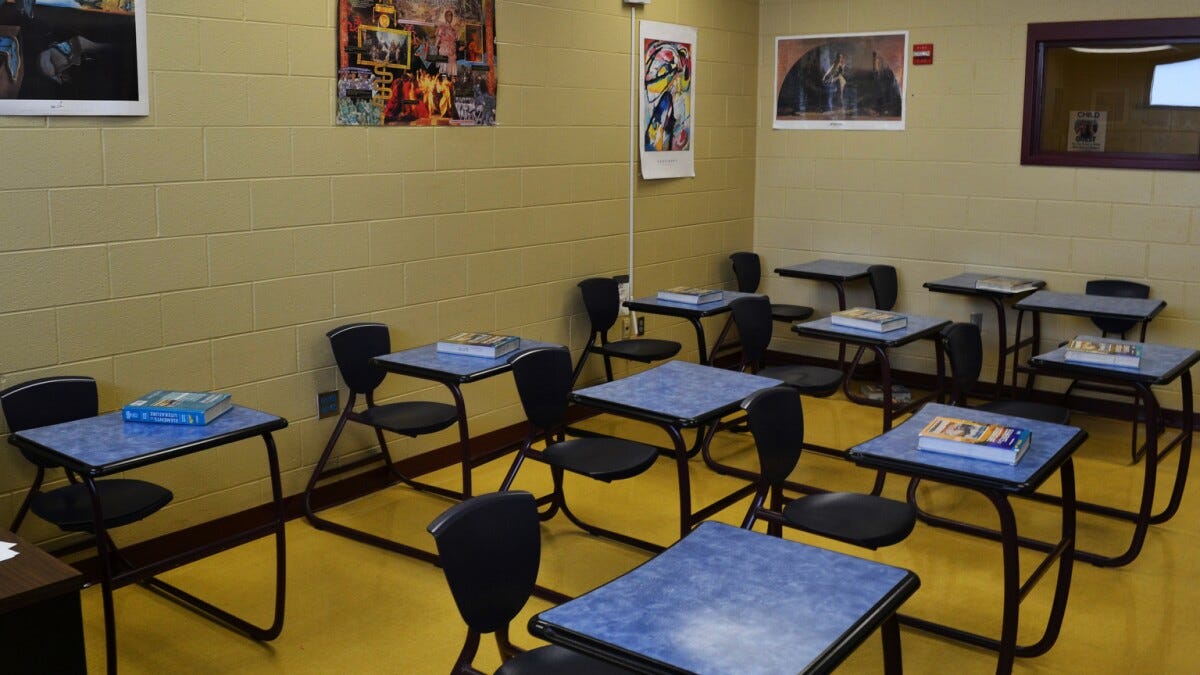High School in a Time of Constant Imminent Calamity
It's just another bomb threat
A text message appeared. Isaac’s high school had received a bomb threat. Again. This was the second one this fall. The school evacuated the children to open space outside, then escorted them to the local community center. Our phones buzzed with updates every few minutes. The bomb squad came. Law enforcement from all over the Bay Area and beyond swept the campus. All classes were canceled. Athletic events, canceled. There was no bomb.
Last week, the emergency text message warned of a potential tsunami. There was an earthquake off the coast of northern California. Mount Tamalpais stands between the ocean and our town—Mill Valley, California. But stay away from the coast! Would the children need to evacuate the high school? Not this time. Local authorities reasonably determined that the potential tsunami did not require evacuation, which makes sense, because most people leave the high school by moving to a lower elevation. Many of its buildings sit on a steep hill. In any event, there was no tsunami.
The bomb threat in September, a few months ago, prompted the superintendent to close all five high schools in the district. The bomb threat was received at a district office in Larkspur. The person making the bomb threat apparently did not say which high school was the target, so the superintendent closed all of them, “in an abundance of caution.”1 There were no bomb-related deaths, although the cost and inconvenience of the school closures were high. Also, there was no bomb.
Why all the caution? Go ahead and imagine that you received a bomb threat, deemed it not credible, and then a bomb detonated inside a high school, killing dozens of students. Actually, this may be very hard to imagine. Can you remember the last time somebody called a school to warn the school that a bomb had been planted in the building and then a bomb exploded at the school? This scenario is apparently very rare. According to one university source, in 2005, the Bureau of Alcohol, Tobacco, and Firearms recorded fourteen bombing incidents that were accompanied by warnings, although it defined “bombing incident” to include fake bombs.2
The federal government collects data on explosion incidents. The Bomb Data Center reports that 320 bombings—of all kinds and in all places—occurred in 2023, causing 27 fatalities. There were 58 bombings (all kinds, all places) in California.3 The Center maintains data by target type, but its 2023 report has no separate category for schools. A different Bomb Data Center report says that in 2019, six bomb explosions occurred at “educational institutions,” which was double the prior year’s total of three explosions.4 Wikipedia has a page for school bombings, which lists a handful of terrorist attacks on schools over the last 100 years.5 I find an article published by Educator’s School Safety Network reporting that one detonation had occurred during the prior year.6
It is easy to imagine why someone would make a bomb threat. School’s out! Plus, the person making the threat feels powerful as everyone runs for cover. For a desperate person who doesn’t much care whether he gets caught or a teenager who is simply not thinking at all, this may be the best they can do for their self esteem.
Many fewer people are able and willing to build a real bomb, then warn the school about it, and then detonate it after the warning. For one thing, building a bomb that uses a timer device to detonate is not easy and would require patience and care that the vast majority of impulsive and troubled teenagers do not have. Maybe you can buy one online, but shipping a bomb in the mail can’t be easy, if it is possible at all. Anyway, the advance warning means that nobody should be harmed, and it is not clear what demands can be made or satisfied based on the detonation of bomb in an evacuated building. The person who warns everyone away and then detonates a bomb in an empty building is a unique character. There is such a thing as terrorist attacks, but terrorists don’t give warnings.
I suspect and hope that law enforcement officials and school administrators are weighing the costs and benefits of canceling school every time a bomb threat darkens their door. But there is almost no way for us to know because they do not disclose the particulars of bomb threats. It’s a public trust situation. Even so, given that virtually every bomb threat is a hoax, it seems as though officials should demand a very high degree of specificity from the threat-maker before concluding that the threat requires evacuation and cancellation of school. Where exactly is the bomb? What does it look like? What kind of bomb is it? When will it detonate? If the threat-maker does not have this information, then, absent some other compelling circumstances, I would not cancel school.
The alternative is our series of emergency warnings and evacuations. These have their own cost. It cannot be healthy for anyone and especially children to live under a sky of blinking red lights. Canceling school also empowers and rewards the threat-makers while punishing everyone else with make-up days and disruption. Worst of all, each evacuation subtly teaches that the world is a dangerous and hostile place, adding a little bit of distrust to each child’s overall civic disposition. We should do everything we can do avoid going down that path, even while recognizing that dangers sometimes do emerge. In the case of bomb threats, though, it seems to me that the abundance of caution is worse than the threat itself.
https://www.marinij.com/2024/09/13/bomb-threat-closes-tam-union-schools-early-friday.
https://popcenter.asu.edu/content/bomb-threats-schools-0.
https://www.atf.gov/arson/docs/report/2023explosivesincidentreporteirpdf/download.
https://www.atf.gov/file/143481/download.
https://en.wikipedia.org/wiki/Category:School_bombings_in_the_United_States.
https://eschoolsafety.org/bir.

